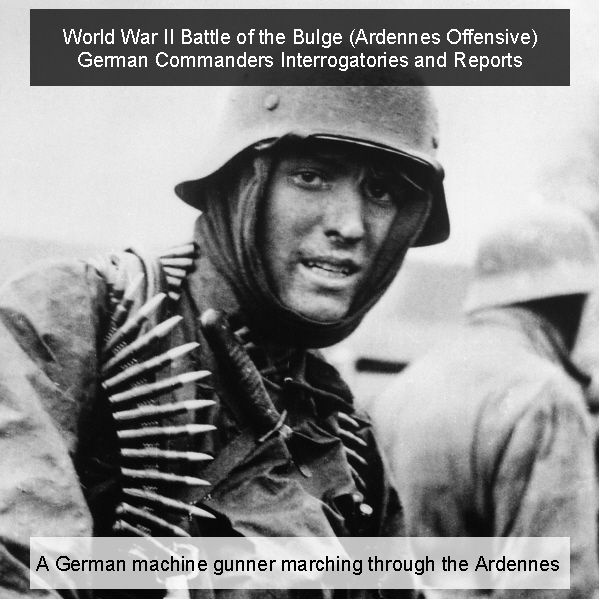
WWII: Ardennes Offensive – German Officer Reports & Interrogatories
$19.50
Description
The Ardennes Offensive: A German Perspective
This timeline focuses on the German perspective and key events as described by the German commanders and reports.
- Pre-December 1944:
- Formation of Volksgrenadier Divisions: The 212th Volks Grenadier Division (under Franz Heinrich Otto Sensfuss) and others are formed. These divisions are smaller (10,000 soldiers vs. 16,000), incorporate retasked airmen and sailors, receive six weeks of training, and are equipped with the new Sturmgewehr 44 assault rifle. They are intended to represent the “will of the German people.”
- Training and Planning: German forces, including motorized units, undergo training for the offensive. Operational plans are developed, including deception measures.
- Reconditioning of Troops: Forces like the 3rd Panzer Grenadier Division (under Walter Denkert) are reconditioned near the frontlines.
- December 1944:
- December 13-18, 1944: Battle of Kesternich: The 212th Volks Grenadier Division (Sensfuss) achieves initial success, encircling and reducing an entire battalion of the U.S. 78th Infantry Division’s 310th Infantry Regiment, capturing over 300 men and officers. This demonstrates the initial effectiveness of the surprise element.
- December 16, 1944: German Offensive in the Ardennes Begins (Battle of the Bulge):The main assault commences, aiming to exploit the element of surprise.
- The Fifth Panzer Army (Carl Wagener) is a key attacking force.
- The German Seventh Army (Erich Brandenberger) is tasked with guarding the southern flank of the Fifth Panzer Army.
- The XLVII Panzer Corps (Heinrich von Lüttwitz) is involved in operations.
- The Sixth SS Panzer Army Artillery (Walter Staudinger) plays a role in the offensive.
- The 12th Infantry Division (Gerhard Engel) engages in battles during the offensive.
- Initial success for some Volksgrenadier divisions due to surprise.
- Post-December 16, 1944:American Countermeasures: The Americans implement speedy countermeasures following the surprise attack, hindering German progress (noted by Carl Wagener).
- Traffic Jams: German motorized units experience severe traffic jams on roads, impacting their advance (noted by Carl Wagener).
- Losses for German Seventh Army: The German Seventh Army suffers severe losses from the U.S. Army’s 3rd Army during General George S. Patton’s drive towards Bastogne and Houffalize.
- Deterioration of Volksgrenadier Performance: The 212th Volks Grenadier Division, despite its initial success, cannot maintain its performance level. The overall “Volksgrenadier concept” largely falls short of German expectations.
- Deception Measures and Radio Intelligence: These are aspects of the offensive’s planning and execution.
- Fuel Supply and Weather: These factors influence the course of the battle and are discussed in post-war interrogatories.
- Effect of Air Power: The impact of Allied air power on the outcome of the battle is a subject of post-war analysis.
- Adolf Hitler’s Influence: Hitler’s characteristics and rationales significantly affect the execution of the offensive (documented by Percy Ernst Schramm).
- January 14, 1945: Conclusion of the German Offensive in the Ardennes.
- April 1945: Battle of the Ruhr Pocket: The 212th Volks Grenadier Division is destroyed.
- 1945-1947: Post-War Interrogations and Reports:
- German commanders, including former POWs, answer U.S. Army questionnaires and write operational studies.
- July 20, 1945: Alfred Jodl is presented with twenty questions about the offensive; his answers are reviewed by Wilhelm Keitel.
- Nuremberg Trials:Wilhelm Keitel and Alfred Jodl are indicted by the International Military Tribunal.
- Percy Ernst Schramm testifies on behalf of Jodl, maintaining Jodl’s loyalty as a soldier but denying his involvement in war crimes or ideological Nazi beliefs.
- October 16, 1946: Wilhelm Keitel and Alfred Jodl are found guilty of all charges (including crimes against humanity, war crimes, and crimes against peace) and executed.
Cast of Characters
This list includes principle people mentioned in the sources, with brief biographies:
- Wilhelm Keitel (1882–1946): Chief of the Armed Forces High Command of Germany during World War II. He signed numerous criminal orders and directives. He reviewed Alfred Jodl’s answers regarding the Ardennes offensive. Indicted and found guilty on all counts (crimes against humanity, crimes against peace, criminal conspiracy, war crimes) by the International Military Tribunal in Nuremberg, and executed in October 1946.
- Alfred Jodl (1890–1946): Chief of the Operations Staff for the Armed Forces High Command. He was interrogated about the Ardennes offensive. Percy Ernst Schramm’s superior and a key figure in the German High Command. Indicted and found guilty of conspiracy to commit crimes against peace, planning/initiating/waging wars of aggression, war crimes, and crimes against humanity by the International Military Tribunal in Nuremberg, and executed in October 1946.
- Major Percy Ernst Schramm (1894-1970): Official staff historian and diarist for the German High Command Operational Staff (Wehrmachtführungsstab). He provided accounts of the German course of events in the Ardennes offensive, including details on command organization and Adolf Hitler’s influence on the operation. He testified as a key witness at the Nuremberg Trials on behalf of Jodl.
- Siegfried von Waldenburg (1898–1973): General in the Wehrmacht who commanded the 116th Panzer Division during World War II.
- Rudolf Christoph Freiherr von Gersdorff (1905–1980): General and Chief of Staff of the German 7th Army. He participated in three failed plots to assassinate Hitler, which remained undetected. He provided information on the offensive’s history, operational plans, deceptions, operations, and conclusion.
- Franz Heinrich Otto Sensfuss (1891-1976): Generalleutnant who led the 212th Volks Grenadier Division. His division achieved initial surprise success at the Battle of Kesternich but later struggled and was destroyed in the Battle of the Ruhr Pocket in April 1945.
- Carl Wagener (1901–1988): Commander of the Fifth Panzer Army. He focused on the reasons for the Ardennes offensive’s failure, citing speedy American countermeasures, poor training of motorized units, traffic jams, and low morale.
- Erich Brandenberger (1892-1955): General der Panzertruppe who led the German Seventh Army in the Ardennes. His army guarded the southern flank of the Fifth Panzer Army and suffered severe losses from the U.S. Army’s 3rd Army under General George S. Patton.
- Diepold Georg Heinrich Freiherr von Lüttwitz (1896–1969): General der Panzertruppe (General of the Armored Corps). He described the operations of the XLVII Panzer Corps. (Also listed as Heinrich von Luettwitz in another entry).
- Hans Felber (1889–1962): General der Infanterie and commander of the Corps Group Felber. He covered defensive fighting in the Ardennes.
- Generalmajor Walter Denkert (1897–1982): Commander of the 3rd Panzer Grenadier Division. He wrote about the reconditioning of troops near the frontlines.
- Walter Staudinger: Generalleutnant and commander of the Sixth SS Panzer Army Artillery. He wrote about its role in the Ardennes offensive.
- Guenther Reichhelm: Oberst (Colonel) of German Army Group B. He provided a summary of engagements in the West, background information on the Ardennes offensive, and a character sketch of Field Marshal Modell.
- Gerhard Engel (1906 – 1976): Generalleutnant. His report describes the battles of the 12th Infantry Division during the Ardennes Offensive until December 29, 1944.
- Generalstabsoffizier Hans-Juergen Dingier: Chief of staff of the LVIII Panzer Corps. He described campaigns in Northern France, the Rhineland, and the Ardennes.
- Karl Thoholte (1893-1954): General der Artillerie and commander of Army Group B Artillery.
- Eugen Walter Krüger (1892–1973): General der Panzertruppen and commander of the LVIII Panzer Corps.
- Walter Lucht (1882 – 1949): General der Artillerie of the LXVI Corps.
- Otto Hitzfeld: General der Infanterie of the LXIV Armeekorps.
- Generalleutnant Fritz Bayerlein: Commander of the Panzer Lehr Division.
- Herbert Buechs: Air Corps Aide to General Jodl.
- Generalmajor Erwin Kaschner: Commander of the 326th Volksgrenadier-Division.
- Werner Bodenstein: Corps chief of staff LIII Corps.
- Generalmajor Paul Riedel: Of the German Seventh Army Artillery.
- Adolf Hitler: (Not explicitly identified with dates, but mentioned as having his characteristics and rationales effect the execution of the offensive.) As Führer of Nazi Germany, he was the ultimate decision-maker for the Ardennes offensive.
- General George S. Patton: (Not explicitly identified with dates, but mentioned in relation to the U.S. Army’s 3rd Army’s drive to Bastogne and Houffalize, inflicting losses on the German Seventh Army.) A prominent American general who commanded the U.S. Third Army.
- Field Marshal Modell: (Briefly mentioned in a character sketch by Guenther Reichhelm.) German Field Marshal, likely Walter Model, known for his defensive prowess.
WWII Battle of the Bulge: German Commanders’ Interrogations & Reports
Interviews and Official Records from German Commanders Regarding the World War II Battle of the Bulge (Ardennes Offensive)
This collection comprises 1,175 manuscript pages, consisting of responses to inquiries from the U.S. Army and reports submitted by 19 German military leaders, many of whom commanded German units during the Ardennes Offensive, widely recognized in the United States as the Battle of the Bulge. These documents were compiled during the period spanning 1945 to 1947. Subsequent to World War II, the U.S. Army tasked numerous German generals with authoring operational analyses of the conflict, initially while they were prisoners of war in the 1940s, and subsequently as paid staff in the 1950s. The various accounts within this compilation detail the progression of the German offensive in the Ardennes region, which took place from December 16, 1944, to January 14, 1945. Key contributors of information include:
Wilhelm Keitel (1882–1946), who served as the head of Germany’s Armed Forces High Command throughout World War II. Keitel authorized numerous unlawful commands and instructions, contributing to a conflict characterized by unparalleled savagery and misconduct. Alfred Jodl (1890–1946), who held the position of head of the Operations Staff within the Armed Forces High Command. Jodl received twenty specific inquiries regarding the offensive on July 20, 1945. Keitel subsequently examined Jodl’s responses.
The topics addressed encompassed the motives behind the assault, preparatory training, radio espionage, tactical misleading strategies, provisions for fuel, meteorological conditions, and the influence of aerial capabilities on the ultimate result of the Battle of the Bulge. Subsequently, both Keitel and Jodl faced formal accusations from the International Military Tribunal situated in Nuremberg. Keitel was convicted on every charge brought against him, encompassing crimes against humanity, transgressions against peace, involvement in a criminal conspiracy, and war crimes.
Jodl received convictions for all allegations, specifically: colluding to perpetrate offenses against peaceful relations; conceiving, commencing, and conducting aggressive warfare; committing war crimes; and engaging in crimes against humanity. Both men were put to death on October 16, 1946. Major Percy Ernst Schramm (1894-1970), who maintained the official war diary for the Wehrmacht Operations Staff. He provided narratives detailing the progression of the German offensive. His contributions also include specifics regarding the command structure for the Ardennes offensive. Schramm was capable of describing how Adolf Hitler’s personal traits influenced the implementation of the offensive and his reasoning throughout the Battle of the Bulge. Schramm assumed the role of the official staff chronicler, or diarist, for the Wehrmachtführungsstab, the German High Command Operational Staff, succeeding Helmuth Greiner.
During 1944, Schramm’s sister-in-law was executed due to her active resistance against the Nazi regime, and subsequent allegations challenging Schramm’s own credibility reached Hitler’s headquarters. Nevertheless, General Alfred Jodl, who outranked Schramm, disregarded these claims, allowing the historian to persist in his capacity as the war diarist. Owing to his intimate familiarity with the High Command, Schramm was summoned as a principal witness during the post-war Nuremberg Trials, where he offered testimony supporting Jodl. Schramm asserted that Jodl, despite being a dedicated military professional, did not hold Nazi ideological convictions and was not implicated in any war crimes.Jodl faced a trial, was found guilty, and subsequently executed by hanging in 1946.
Siegfried von Waldenburg (1898–1973), a general serving in the Nazi German Wehrmacht throughout World War II, held command of the 116th Panzer Division. Rudolf Christoph Freiherr von Gersdorff (1905–1980) functioned as a General and the Chief of Staff for the German 7th Army. He took part in three conspiracies aimed at assassinating Hitler; despite all three attempts failing, his participation remained undiscovered. Gersdorff provided details concerning the historical background of the offensive, its strategic plans, tactical deceptions, various operations, and the ultimate end of the Battle of the Bulge. Lieutenant General Franz Heinrich Otto Sensfuss (1891-1976) served as the commanding officer for the 212th Volksgrenadier Division.
This particular division represented a reformation of the original 272nd Infantry Division, which had sustained significant casualties in Normandy. Furthermore, personnel from the air force and navy were reassigned to perform infantry roles, undergoing six weeks of intensive training prior to their deployment on the Western Front for engagement in the offensive. The revamped volksgrenadier division organization incorporated a reduced size of 10,000 troops, in contrast to the standard 16,000 soldiers. Troops were equipped with the novel 1944 assault rifle (Sturmgewehr 44) rather than the conventional bolt-action Mauser Model 98 firearm.
It was intended that the volksgrenadier divisions would serve as an exemplary new formation, symbolizing the resolve of the German populace, or “das Volk,” and their determination to persist in combat until the very end. Initially, this division benefited significantly from the advantage of surprise. From December 13th to 18th, 1944, during the engagement at Kesternich, the division successfully surrounded and diminished a complete battalion of the 310th Infantry Regiment belonging to the U.S. 78th Infantry Division, taking captive more than 300 soldiers and their commanding personnel.
This unit failed to sustain its peak performance and was ultimately obliterated in April 1945 during the Battle of the Ruhr Pocket. The majority of other volksgrenadier divisions experienced greater setbacks, and the overall volksgrenadier strategy failed to meet German projections by a considerable margin. By the conflict’s conclusion, Allies regarded the designation “volksgrenadier” as synonymous with an inferior, last-resort kind of serviceman. Carl Wagener (1901–1988) served as the commanding officer for the Fifth Panzer Army. Wagener focused his analysis on the factors contributing to the Ardennes offensive’s lack of success.
He identified several causes, including the swift American countermeasures following the initial surprise assault, inadequate training among mechanized units, severe road congestion, and low troop morale. General of Panzer Troops Erich Brandenberger (1892-1955) commanded the German Seventh Army during the Ardennes campaign. Throughout the offensive, the 7th Army’s assignment involved protecting the Fifth Panzer Army’s southern side, enduring heavy casualties inflicted by the U.S. Army’s 3rd Army as General George S. Patton advanced towards Bastogne and Houffalize. General of Panzer Troops Diepold Georg Heinrich Freiherr von Lüttwitz (1896–1969), also known as Heinrich von Luettwitz, provides an account of the XLVII Panzer Corps’ engagements. General of Infantry Hans Felber (1889–1962), who commanded Corps Group Felber, documented the defensive combat operations conducted in the Ardennes.
Major General Walter Denkert (1897–1982), the commanding officer of the 3rd Panzer Grenadier Division, details the process of troop rehabilitation in proximity to the front lines.Lieutenant General Walter Staudinger, who commanded the artillery for the Sixth SS Panzer Army, documented its involvement in the Ardennes Offensive.
Colonel Guenther Reichhelm of German Army Group B provided an overview of Western Front engagements, offering historical context for the Ardennes offensive, and featuring a personal profile of Field Marshal Modell.
Lieutenant General Gerhard Engel authored a report detailing the military operations of the 12th Infantry Division during the Ardennes Offensive, concluding on December 29, 1944.
Hans-Juergen Dingier, who served as Chief of Staff for the LVIII Panzer Corps, chronicled the various campaigns in Northern France, the Rhineland region, and the Ardennes.
Additional notable individuals contributing include:
Karl Thoholte (1893-1954), a General of Artillery, who commanded the artillery for Army Group B. Eugen Walter Krüger (1892–1973), a General of Armored Troops, who led the LVIII Panzer Corps. Walter Lucht (1882 – 1949), a General of Artillery associated with the LXVI Corps. Otto Hitzfeld, a General of Infantry, from the LXIV Army Corps. Heinrich von Luettwitz, a General of Armored Troops, who commanded the XLVII Panzer Corps. Lieutenant General Fritz Bayerlein, commander of the Panzer Lehr Division. Herbert Buechs, an Air Corps Aide assigned to General Jodl. Major General Walter Denkert, who served as the Commander of the 3rd Panzer Grenadier Division. Major General Erwin Kaschner, commander of the 326th Volksgrenadier Division. Werner Bodenstein, Chief of Staff for the LIII Corps. Major General Paul Riedel, associated with the German Seventh Army Artillery.

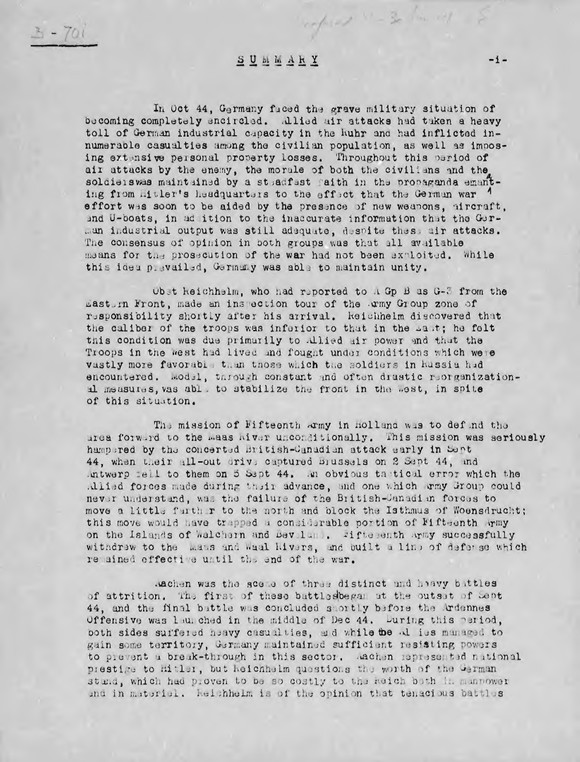
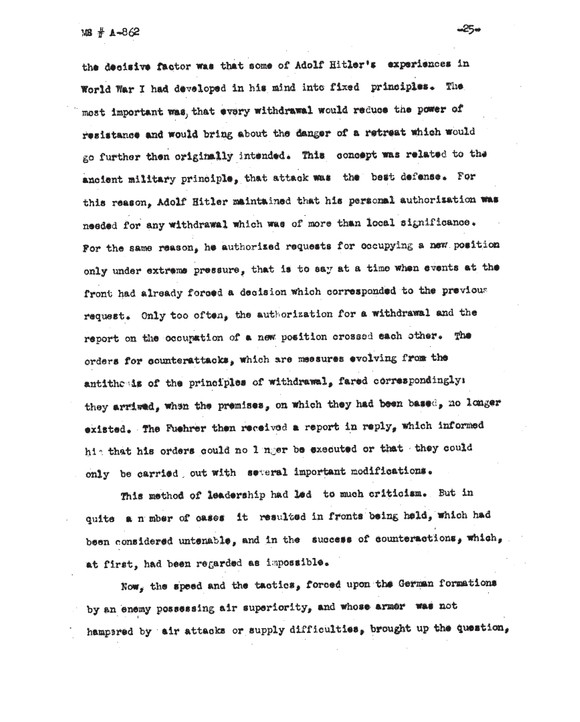
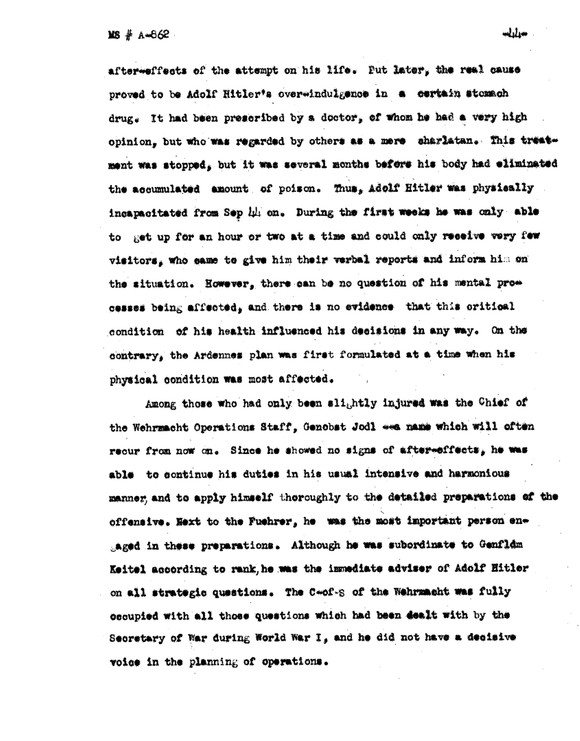
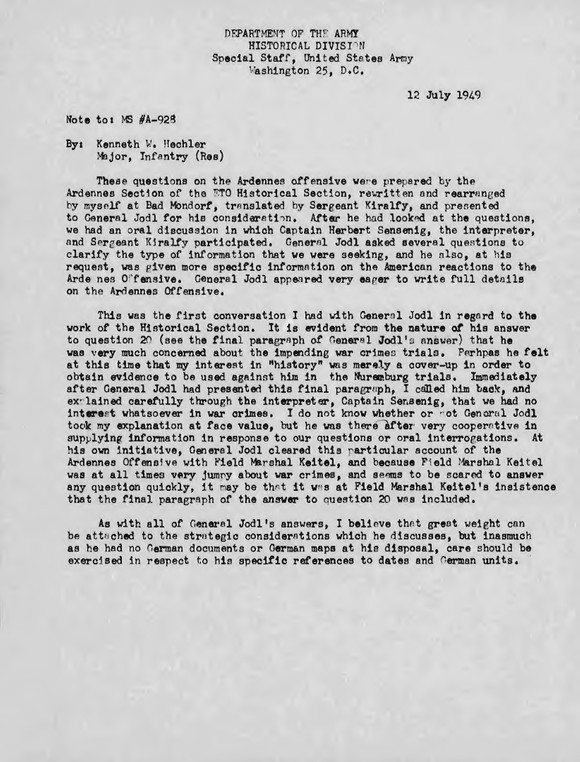
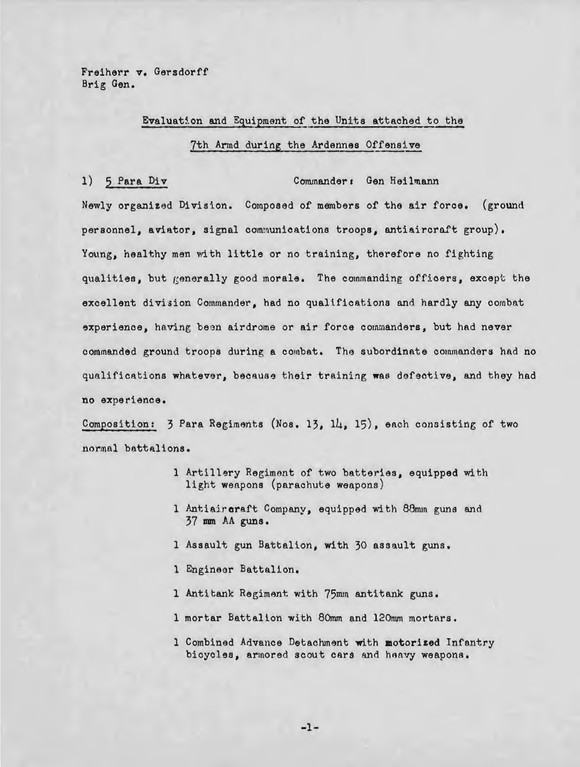
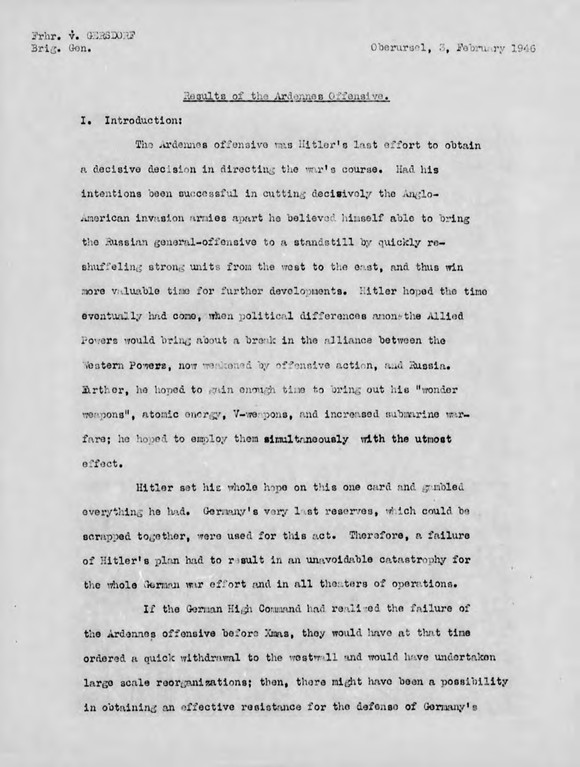

Related products
-
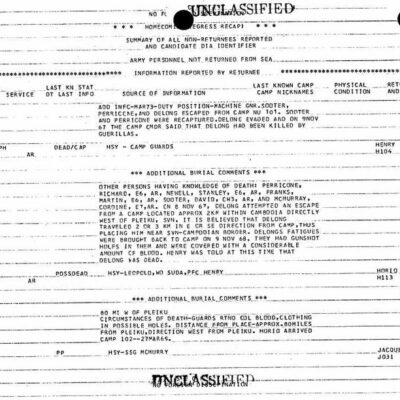
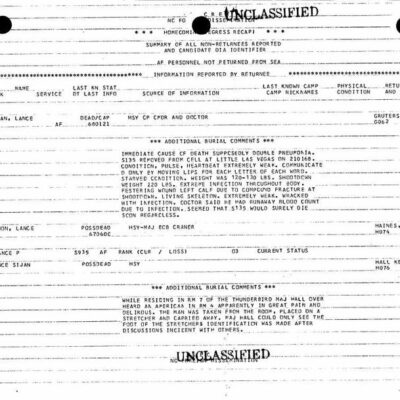
Vietnam War: POW/MIA Summary of All Reported Non-Returnees
$19.50 Add to Cart -
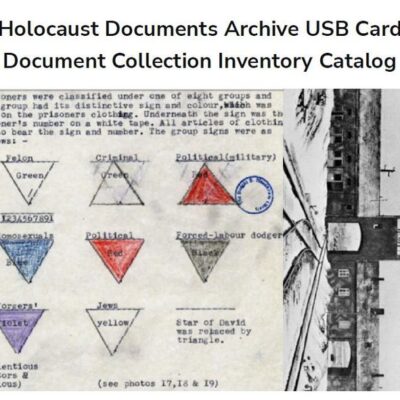
Holocaust Document Archive PDF file – Inventory Catalog of Document Collection
$3.94 Add to Cart -
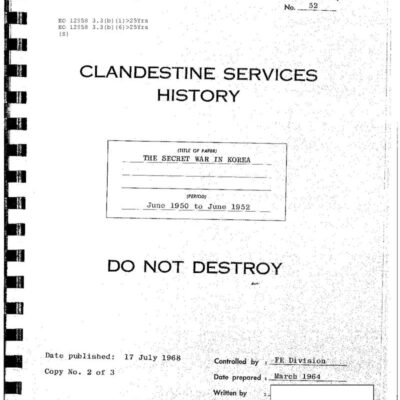
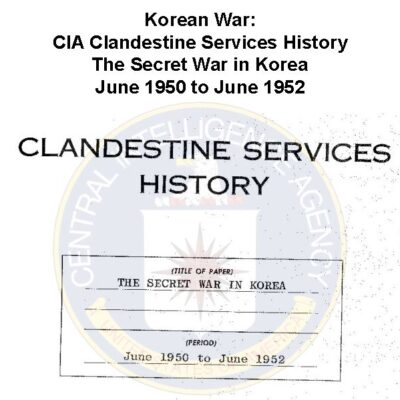
Korean War: CIA Covert Operations History – The Secret Conflict in Korea
$3.94 Add to Cart -

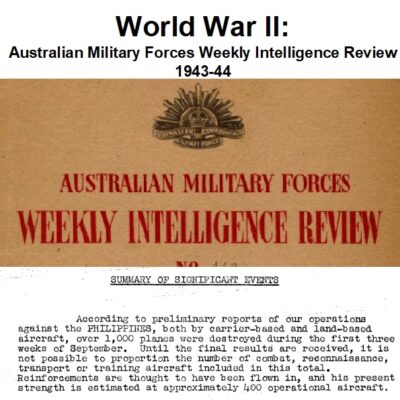
World War II: Australian Military Weekly Intelligence Reports 1943-44
$3.94 Add to Cart